Instruction
Subtract, Don’t Add for a Better Golf Swing
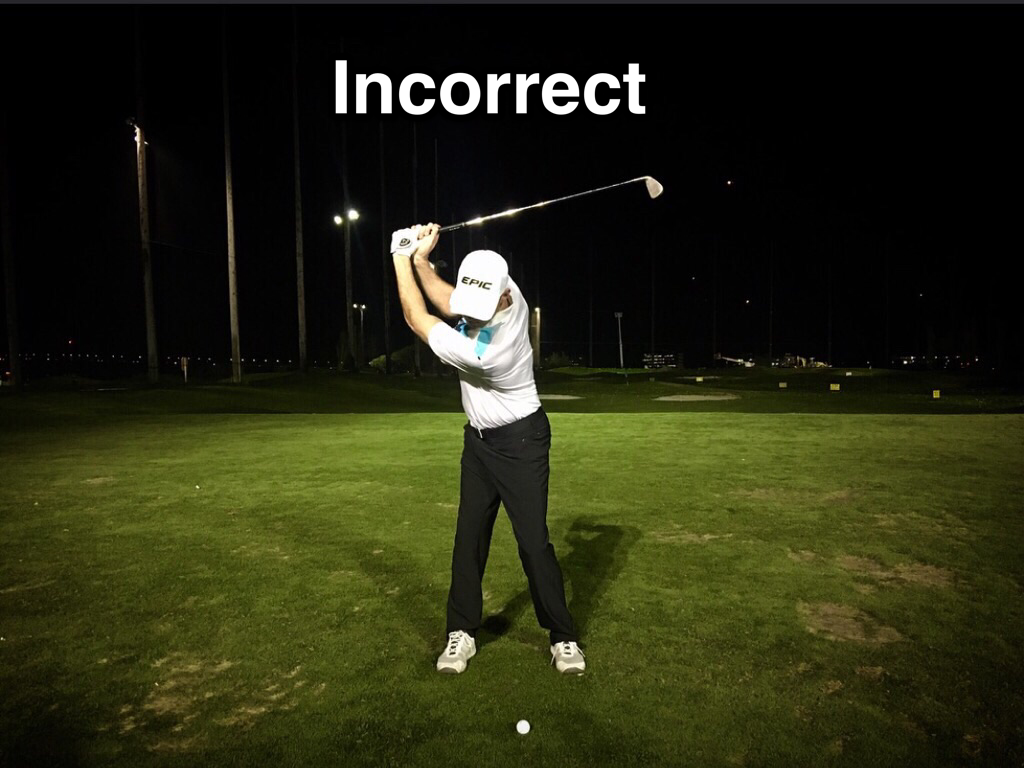
Speed and power sell, but repeatability and simplicity lowers scores. Now with swing coaches partnering with with fitness companies, I see more swings on the range getting longer with the body moving in every direction. Students come to me saying they can’t hit a draw because they aren’t flexible.
Don’t get me wrong; fitness has a place in the game. It can be very beneficial, preventing injuries and creating longevity. Cross-sport training is even better. Just make sure it’s a supplement to your swing, not adding movements to try and swing like certain Tour players.
Golfers are better served looking to subtract from their swing, not add. Whenever we can eliminate moving parts, we have a greater chance of repeatability with no loss of speed or power. Simplicity equals consistency.
Quoting Steve Elkington, PGA Championship winner and host of Secret Golf, “Your golf swing has to be as simple as possible or you can’t repeat it.” So how do we simplify the swing? Simply look to rid your motion of those needless movements.
Don’t Set Up Like a Shortstop
The common instruction of “feel like a shortstop, be athletic” works great for baseball, but not for golf. We don’t need to set up to the ball so we can move left or right.
Rather, the closer we set up to our impact angles, the less movement is required to get back to the correct impact position. To do this, set up with slight pressure on your left foot (right-handed golfer) and make sure you have your upper half set behind the ball.
Look back at the article “The difference between pressure and weight” to get the proper setup. This is nothing new, as many of the greats — past and present — have addressed the ball this way. Below is a photo of Jack Nicklaus and Peter Thomson.
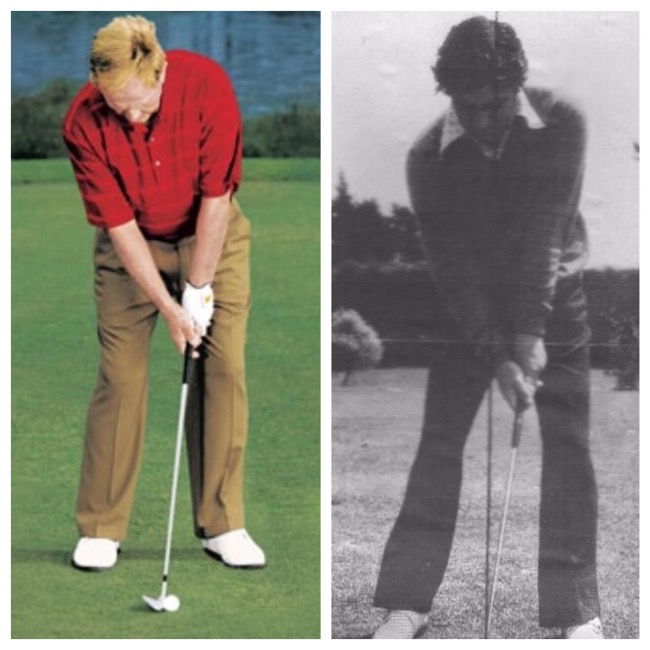 Make sure you address the ball so you can coil behind the it with no lateral movement necessary.
Make sure you address the ball so you can coil behind the it with no lateral movement necessary.
Stop the Shift
If you set up to the ball correctly, there is no need to shift laterally in the backswing. A shift will just require you to move even more in downswing to make solid contact. In fact, not only is shifting a wasted movement, it will actually slow you down. Think of a swimmer, who wants to swim in a direct line. The more side-to-side movement the swimmer has during their stroke, the less speed they produce.
Below is a great way to get the proper feel of a coil. Set up in your posture with your arms tucked in at a 90-degree angles. Pull your right arm back and move your left arm out. Let your right glute move back slightly as well. You will notice your shoulders have naturally moved back and there is no shifting of your hips.
Think of your backswing more as a coil, not as a shift and turn. Work on rotating or coiling with your body in the same position for the most efficient swing possible.
The Over-Swing
A common swing complaint among first-time students is they feel their swing is too long and tough to repeat. They are usually correct.
Getting too long with your golf swing is usually a product of your body motion. The “shift-and-turn” tip leads to several faults, the most common being too much rotation. Add a long swing with a shift and a player will usually tilt back toward the target, which is a difficult position to recover from.
A great drill to shorten your swing and develop arm speed is to simply hit balls with your feet together. Below is an example.
When doing this drill, feel like you are holding your body and swinging the shaft with your arms. You will notice your shoulders will still have moved back and around without a conscious “turn.” For more speed, hold your body and swing the shaft faster. Soon, you will notice you can hit the ball close to the same distance with much less movement than before.
Remember, anytime we can limit wasted movement in the golf swing we have a greater chance of better contact. Better contact and a simplified swing will equal lower scores.
- LIKE454
- LEGIT64
- WOW6
- LOL10
- IDHT2
- FLOP7
- OB6
- SHANK62
Instruction
Clement: Laid-off or perfect fade? Across-the-line or perfect draw?

Some call the image on the left laid off, but if you are hitting a fade, this could be a perfect backswing for it! Same for across the line for a draw! Stop racking your brain with perceived mistakes and simply match backswing to shot shape!
- LIKE0
- LEGIT0
- WOW0
- LOL0
- IDHT0
- FLOP0
- OB0
- SHANK1
Instruction
The Wedge Guy: The easiest-to-learn golf basic

My golf learning began with this simple fact – if you don’t have a fundamentally sound hold on the golf club, it is practically impossible for your body to execute a fundamentally sound golf swing. I’m still a big believer that the golf swing is much easier to execute if you begin with the proper hold on the club.
As you might imagine, I come into contact with hundreds of golfers of all skill levels. And it is very rare to see a good player with a bad hold on the golf club. There are some exceptions, for sure, but they are very few and very far between, and they typically have beat so many balls with their poor grip that they’ve found a way to work around it.
The reality of biophysics is that the body moves only in certain ways – and the particulars of the way you hold the golf club can totally prevent a sound swing motion that allows the club to release properly through the impact zone. The wonderful thing is that anyone can learn how to put a fundamentally sound hold on the golf club, and you can practice it anywhere your hands are not otherwise engaged, like watching TV or just sitting and relaxing.
Whether you prefer an overlap, interlock or full-finger (not baseball!) grip on the club, the same fundamentals apply. Here are the major grip faults I see most often, in the order of the frequency:
Mis-aligned hands
By this I mean that the palms of the two hands are not parallel to each other. Too many golfers have a weak left hand and strong right, or vice versa. The easiest way to learn how to hold the club with your palms aligned properly is to grip a plain wooden ruler or yardstick. It forces the hands to align properly and shows you how that feels. If you grip and re-grip a yardstick several times, then grip a club, you’ll see that the learning curve is almost immediate.
The position of the grip in the upper/left hand
I also observe many golfers who have the butt of the grip too far into the heel pad of the upper hand (the left hand for right-handed players). It’s amazing how much easier it is to release the club through the ball if even 1/4-1/2″ of the butt is beyond the left heel pad. Try this yourself to see what I mean. Swing the club freely with just your left hand and notice the difference in its release from when you hold it at the end of the grip, versus gripping down even a half inch.
To help you really understand how this works, go to the range and hit shots with your five-iron gripped down a full inch to make the club the same length as your seven-iron. You will probably see an amazing shot shape difference, and likely not see as much distance loss as you would expect.
Too much lower (right) hand on the club
It seems like almost all golfers of 8-10 handicap or higher have the club too far into the palm of the lower hand, because that feels “good” if you are trying to control the path of the clubhead to the ball. But the golf swing is not an effort to hit at the ball – it is a swing of the club. The proper hold on the club has the grip underneath the pad at the base of the fingers. This will likely feel “weak” to you — like you cannot control the club like that. EXACTLY. You should not be trying to control the club with your lower/master hand.
Gripping too tightly
Nearly all golfers hold the club too tightly, which tenses up the forearms and prevents a proper release of the club through impact. In order for the club to move back and through properly, you must feel that the club is controlled by the last three fingers of the upper hand, and the middle two fingers of the lower hand. If you engage your thumbs and forefingers in “holding” the club, the result will almost always be a grip that is too tight. Try this for yourself. Hold the club in your upper hand only, and squeeze firmly with just the last three fingers, with the forefinger and thumb off the club entirely. You have good control, but your forearms are not tense. Then begin to squeeze down with your thumb and forefinger and observe the tensing of the entire forearm. This is the way we are made, so the key to preventing tenseness in the arms is to hold the club very lightly with the “pinchers” — the thumbs and forefingers.
So, those are what I believe are the four fundamentals of a good grip. Anyone can learn them in their home or office very quickly. There is no easier way to improve your ball striking consistency and add distance than giving more attention to the way you hold the golf club.
More from the Wedge Guy
- The Wedge Guy: Golf mastery begins with your wedge game
- The Wedge Guy: Why golf is 20 times harder than brain surgery
- The Wedge Guy: Musings on the golf ball rollback
- LIKE86
- LEGIT13
- WOW6
- LOL1
- IDHT0
- FLOP4
- OB1
- SHANK8
Instruction
Clement: Stop ripping off your swing with this drill!

Not the dreaded headcover under the armpit drill! As if your body is defective and can’t function by itself! Have you seen how incredible the human machine is with all the incredible feats of agility all kinds of athletes are accomplishing? You think your body is so defective (the good Lord is laughing his head off at you) that it needs a headcover tucked under the armpit so you can swing like T-Rex?
- LIKE0
- LEGIT2
- WOW2
- LOL0
- IDHT0
- FLOP0
- OB0
- SHANK2
-

 19th Hole2 weeks ago
19th Hole2 weeks agoDave Portnoy places monstrous outright bet for the 2024 Masters
-

 19th Hole3 days ago
19th Hole3 days agoJustin Thomas on the equipment choice of Scottie Scheffler that he thinks is ‘weird’
-

 19th Hole2 weeks ago
19th Hole2 weeks agoTiger Woods arrives at 2024 Masters equipped with a putter that may surprise you
-

 19th Hole3 days ago
19th Hole3 days ago‘Absolutely crazy’ – Major champ lays into Patrick Cantlay over his decision on final hole of RBC Heritage
-

 19th Hole2 weeks ago
19th Hole2 weeks agoTwo star names reportedly blanked Jon Rahm all week at the Masters
-

 19th Hole1 week ago
19th Hole1 week agoReport: LIV Golf identifies latest star name they hope to sign to breakaway tour
-

 19th Hole1 week ago
19th Hole1 week agoNeal Shipley presser ends in awkward fashion after reporter claims Tiger handed him note on 8th fairway
-

 19th Hole1 week ago
19th Hole1 week agoBrandel Chamblee has ‘no doubt’ who started the McIlroy/LIV rumor and why

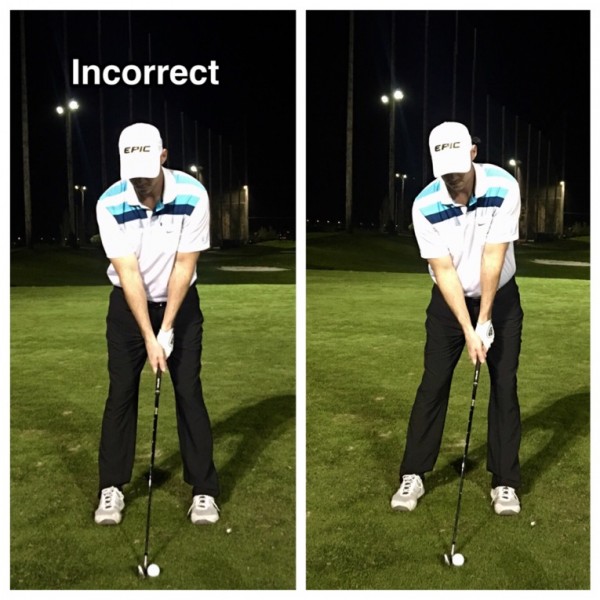

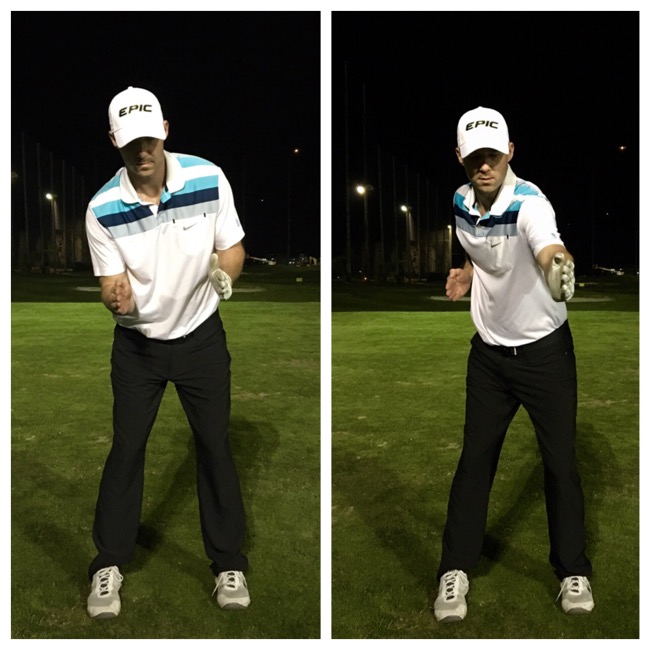


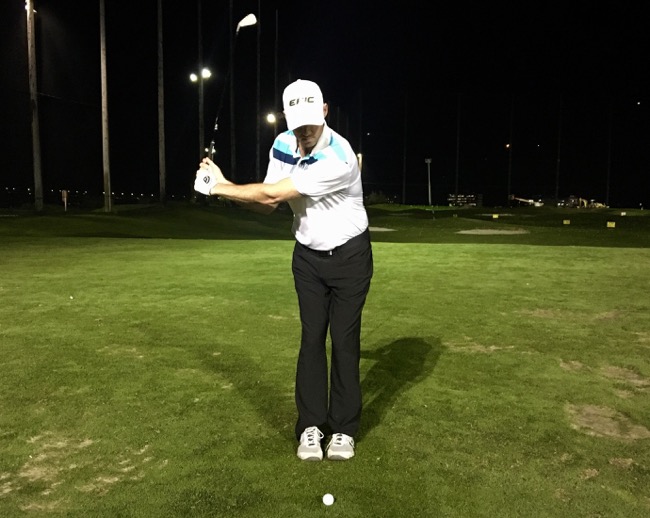















lef
Mar 5, 2017 at 11:08 pm
I think this is great advice for someone like me at a 10 hdcp. A few months ago I started locking my left elbow. This has the effect of abbreviating my backswing to as far as my hips and shoulders can rotate, which isn’t very far compared to DJ or Rory. So I have a pretty short back swing, but I make consistently better contact than when I would allow my left elbow to bend at the top. On average I haven’t lost any distance, but I have gained consistency. I’ll admit I was a little self-conscious about how short and un-manly my swing was. A week ago I went to the range with a friend who is a 2-3 hdcp, and he noticed almost immediately that I was puring most of my irons. But he didn’t say “wow you swing like a old man now”, instead he said, “wow, you’re striping it”. So, at least for me, a smaller more simplified swing is helping me make better contact and hit more greens and fairways.
Bobalu
Mar 5, 2017 at 2:42 pm
Wow. I do not agree with what you are advocating here. Virtually all top coaches teach that at address that your hips should start centered between your feet, and then secondary tilt of spine away from the target is added (only a couple of degrees with an iron), while keeping the hips centered. You are advocating creating this upper body secondary tilt by bumping the left hip toward the target at address, rather than starting with hips centered, then tilting back the upper body. Your way restricts clearing hips on the downswing. The correct way results in a centered pivot and no obstruction to clearing hips on downswing. A small amount of linear motion of the hips towards the target will naturally occur on the downswing of course, but pre-setting the hips forward, then tilting back- like you advocate in your picture- is just flat out wrong and harmful.
Bobalu
Mar 5, 2017 at 5:46 pm
Shawn Cox (on Secret Golf) recommends this left hip forward setup at address for ‘short’ shots. I don’t really follow his logic on why, and I disagree when he states that virtually all PGA players set up for short shots this way.
Kelvin Kelley
Mar 5, 2017 at 6:24 pm
B, Thanks for the comment, I guess the impact position is “harmful”. All great players find the proper “shape” on the downswing. Clearing of your hips will come natural.
ButchT
Mar 5, 2017 at 8:35 am
Thank you! One of the very best explanations I have seen posted on Golfwrx! Butch.
Kelvin Kelley
Mar 5, 2017 at 6:26 pm
Thanks for the comment Butch!
Ronny
Mar 3, 2017 at 9:40 pm
Can’t disagree. Video would have been better to prove his point. Thx
Jack
Mar 3, 2017 at 8:01 pm
The correct top of the backswing shortened just doesn’t look right with the hips and body shifting back and hips bumped forward. The incorrect one has a better shoulder turn but the correct one didn’t just reduce shoulder turn the entire plane changed. Looks like a push slice waiting to happen.
Sonny D
Mar 3, 2017 at 9:25 pm
Correct. Right arm lost connection and changed the plane.
Nice pick up.
chip
Mar 3, 2017 at 2:13 pm
It is a pretty universal idea that for an amateur, shortening the swing is a great idea. I hover around scratch and shortening my swing has done wonders.
Howard
Mar 3, 2017 at 12:37 pm
Excellent article and excellent advice. Agree with your basic philosophy. Many thanks.
Kelvin Kelley
Mar 4, 2017 at 11:39 pm
Thanks for the comment, glad you enjoyed it !
N. D. Boondocks
Mar 3, 2017 at 10:51 am
About a million years ago, when I was a kid (yah, the dark ages were still a fresh memory), I had the only golf lesson I ever truly remember that still works when I need help. There were 4 ‘rules’.
Think of roating around your back leg for the driver.
Think of rotating around your bum for fairway woods.
Think of rotating around your front leg for irons.
Don’t rotate for a putter.
Scott
Mar 3, 2017 at 9:24 am
One of the best articles on the swing this site has ever had.
Kelvin Kelley
Mar 4, 2017 at 11:39 pm
Scott, appreciate the support!
Someone
Mar 3, 2017 at 6:49 am
Didn’t an article from golf wrx before, say that the feet together drill was in the top 5 worst drills for golfers?
Anyhow, what did you mean by “tilt back toward the target”? Sounds a little contradictory, no? While I’d be putting pressure on the left, I don’t think there’s ever a time I’m leaning toward the target. Could you elaborate please?
Kelvin Kelley
Mar 3, 2017 at 11:25 am
Tilt meaning your upper half of your body starts too bend or tilt back towards the target. The opposite of the preferred set up position. Hope this helps.
Someone
Mar 4, 2017 at 11:33 pm
So basically straightening up and moving your weight forward?
Kelvin Kelley
Mar 4, 2017 at 11:42 pm
At the top of the swing, a tilt would be your upper half (torso) moving back towards the target from face on view. Check out the pressure and weight article, I think the pics on that article will help.
Tim
Mar 2, 2017 at 11:16 pm
If you watch the Golf Channel, just today they had Gary Player on (not a bad record as golfer) and what did he say “the first wrong thing you hear from instructors today is shorten the back swing..NO you need to get more back swing….. Is Gary Player wrong>>>>>>>>>>
Kelvin Kelley
Mar 3, 2017 at 12:33 am
There have also been several great players that have had what you think/call “shorter” swings. It’s more about understanding how not to lose your body shape when you coil, turning in the right direction. Think of throwing a ball, do you turn down and rotate your back all the way to to the target to throw the ball? You wouldn’t. It’s a false sense of power. With the concept you have you may as well run into the ball and do a 360 before you hit it.
Steve S
Mar 3, 2017 at 2:50 pm
Is Gary Player wrong? Maybe. If you watch videos of Gary Player he never had a long backswing that I can find but he did have a “wide” backswing. Sometimes pro golfers say one thing(because that is what they think) but do or mean another. And most times the best golfers are not the beat teachers because most of the rest of us CAN’T do what they do and many of them don’t understand it. One of the greatest examples of realizing this was Mickey Mantle in baseball. He was offered many managerial and coaching jobs and turned them down. He claimed that he couldn’t teach what he did because he really didn’t know how he did it; he just PLAYED!
mikee
Mar 2, 2017 at 9:11 pm
Excellent!…..tilt (as in the pictures),pivot (as in the pictures),separate (start the downswing with the lower body) and extend (down the target line)….all done without “overswinging”…….simple!.
Jay
Mar 2, 2017 at 8:05 pm
Doesn’t this general swing philosophy contradict the swing philosophy of Shawn Clement, who had an article this week also ?
I am not trying to start anything, just a bit confusing for an average guy like myself to figure out which is more helpful for an average golfer
Kelvin Kelley
Mar 3, 2017 at 12:43 am
Jay, I would suggest anything that simplifies the golf swing for you, making solid contact!
Scott
Mar 3, 2017 at 9:31 am
Are you talking about cutting the dandelion? If so, I think that these are complementary. This article appears to be able to get you in a simpler position do do what Shawn suggested. Shawn’s video had too much head bobbing up and down for me. I think that you can accomplish the same smooth swing – probably even easier – with what demonstrated in this article.
jacob
Mar 2, 2017 at 2:54 pm
Great article…thanks
Kelvin Kelley
Mar 3, 2017 at 12:34 am
Jacob, glad you enjoyed it!
SoCal
Mar 2, 2017 at 10:28 am
I’d rather set up like a shortstop instead of the setup in the pic. Horrible position for his feet. Just look at Jack in his pic… And about not moving left or right, you need to get on a force plate. Check out COG and COP… SHANK
Jalan
Mar 2, 2017 at 9:44 am
On the occasions I’ve been able to watch tour players practice, I’ve been amazed at how efficient their swings are; and how little excess movement they have in their swings. They rotate back, and then they rotate through the ball.
Easier said than done.
NolanMBA
Mar 2, 2017 at 8:43 am
Man I can totally relate to the over swing. I have plenty of hip and shoulder turn but my arms just keep going back… and back… and back…
Markallister
Mar 2, 2017 at 8:15 am
the pictures are obviously misleading. bad advice.
Ronny
Mar 2, 2017 at 2:11 pm
Okay so- why?
Markallister
Mar 3, 2017 at 8:57 pm
the so-called “overswing” position, is no overswing. it is pretty good.
Dave
Mar 8, 2017 at 8:51 pm
To me, it looks far from “pretty good”… the overswing pic on left looks like the spine tilted toward the target…which prob causes and imbalance….then the pic on the right looks like the golfer needed to sway his hip toward the target in order to counter that and initiate the downswing, instead of rotating… probably a hundred different faults could happen from there (I’ve had them all)… getting stuck, stalling your hips, spinning out, flipping, etc… think that’s in the ballpark of the point he was trying to make.